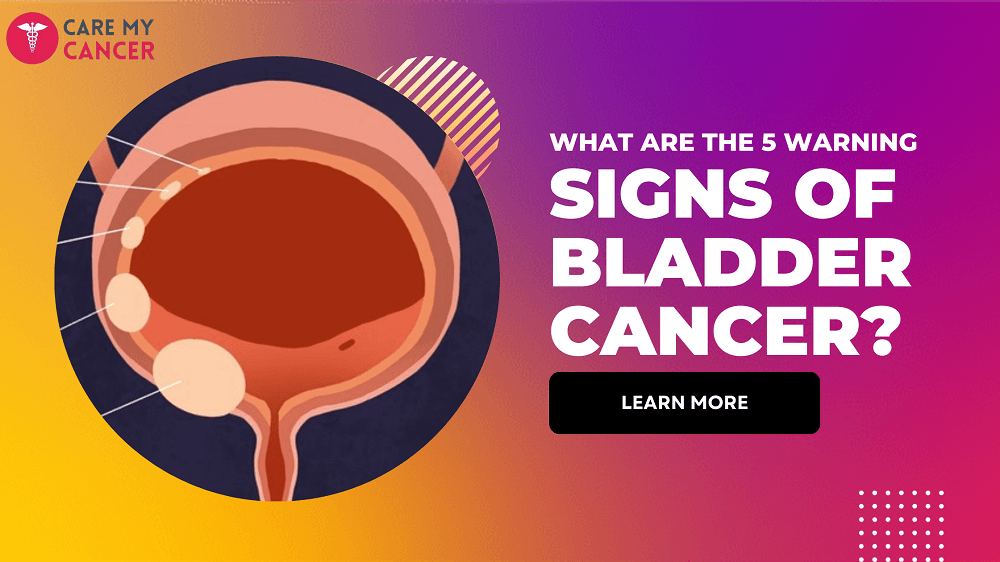Bladder cancer is a significant health concern, affecting thousands of individuals worldwide. Early detection is crucial for effective treatment and better prognosis. Understanding the warning signs can help in early diagnosis and treatment. Here, we delve into the five primary warning signs of bladder cancer to increase awareness and encourage timely medical consultation.
1. Hematuria (Blood in Urine)
One of the most common and noticeable symptoms of bladder cancer is hematuria, or the presence of blood in the urine. This symptom can be intermittent or continuous, and the blood may not always be visible to the naked eye.
- Visible Hematuria: Often, patients may notice red or brown-colored urine. This alarming change is usually what prompts individuals to seek medical advice.
- Microscopic Hematuria: In some cases, the blood is not visible but can be detected through urine tests. Regular screenings are essential, especially for individuals at higher risk.
It’s important to note that hematuria can also be a symptom of other conditions such as urinary tract infections, kidney stones, or benign prostatic hyperplasia (BPH). Therefore, further medical evaluation is necessary to determine the exact cause.
2. Frequent Urination
Bladder cancer can cause changes in bladder habits. One of the key signs to watch for is an increased frequency of urination. This symptom is particularly concerning if it occurs without an increase in fluid intake.
- Daytime Frequency: Needing to urinate more often during the day.
- Nocturia: Waking up multiple times during the night to urinate.
This increased frequency can be due to the tumor irritating the bladder wall, causing a sensation of needing to empty the bladder more often than usual. Persistent frequent urination should be evaluated by a healthcare professional.
3. Painful Urination (Dysuria)
Experiencing pain or a burning sensation during urination, known as dysuria, can be another warning sign of bladder cancer. This symptom occurs when the tumor affects the bladder lining or obstructs the urinary flow.
- Localized Pain: Pain may be felt specifically in the bladder area or lower abdomen.
- Associated Conditions: While dysuria can be indicative of bladder cancer, it is also a common symptom of infections and other urinary conditions.
If painful urination persists, it is essential to consult a healthcare provider for appropriate diagnostic testing to rule out bladder cancer or other serious conditions.
4. Urgency
Bladder cancer can cause a sudden, strong urge to urinate, even when the bladder is not full. This symptom, known as urgency, can be disruptive and concerning.
- Sudden Onset: The urge to urinate can come on quickly and intensely.
- Difficulty Delaying: It may become challenging to delay urination, leading to potential accidents.
Urgency can be a sign of bladder cancer or other bladder dysfunctions. Persistent urgency should be assessed by a medical professional to determine the underlying cause.
5. Lower Back Pain
Lower back pain, particularly in the region of the kidneys, can be a sign of advanced bladder cancer. This pain occurs when the cancer spreads to surrounding tissues or organs.
- Unilateral Pain: Pain is often felt on one side of the body.
- Persistent Pain: The pain may be constant or come and go but does not improve with rest or medication.
Lower back pain can be associated with many conditions, including musculoskeletal issues and kidney problems. However, when combined with other symptoms of bladder cancer, it warrants immediate medical attention.
Risk Factors and Prevention
Understanding the risk factors for bladder cancer can help in taking preventive measures. Some of the primary risk factors include:
- Smoking: Tobacco use is the leading cause of bladder cancer. Smokers are at least three times more likely to develop bladder cancer than non-smokers.
- Chemical Exposure: Occupational exposure to certain chemicals, such as those used in dye, rubber, leather, and paint industries, can increase the risk.
- Chronic Bladder Inflammation: Long-term bladder inflammation or infections can contribute to the development of bladder cancer.
- Age and Gender: Bladder cancer is more common in older adults and men.
- Family History: A family history of bladder cancer can increase the risk.
Diagnosis and Treatment
If you experience any of the warning signs of bladder cancer, it is crucial to seek medical evaluation. Diagnosis typically involves:
- Urinalysis: Checking for blood, cancer cells, and other signs in the urine.
- Cystoscopy: A procedure where a thin, flexible tube with a camera is inserted into the bladder to look for abnormalities.
- Imaging Tests: CT scans, MRI, and ultrasound can help in assessing the extent of the cancer.
Treatment options for bladder cancer depend on the stage and grade of the cancer and may include:
- Surgery: Removing the tumor or part of the bladder.
- Intravesical Therapy: Administering medication directly into the bladder.
- Chemotherapy: Using drugs to kill cancer cells.
- Radiation Therapy: Using high-energy rays to target cancer cells.
- Immunotherapy: Boosting the body’s immune system to fight cancer.
Conclusion
Early detection of bladder cancer significantly improves the chances of successful treatment. By being aware of the warning signs such as hematuria, frequent urination, dysuria, urgency, and lower back pain, individuals can seek timely medical attention. Regular check-ups, particularly for those at higher risk, can aid in early diagnosis and better outcomes. If you notice any of these symptoms, consult your healthcare provider promptly for appropriate evaluation and management.

